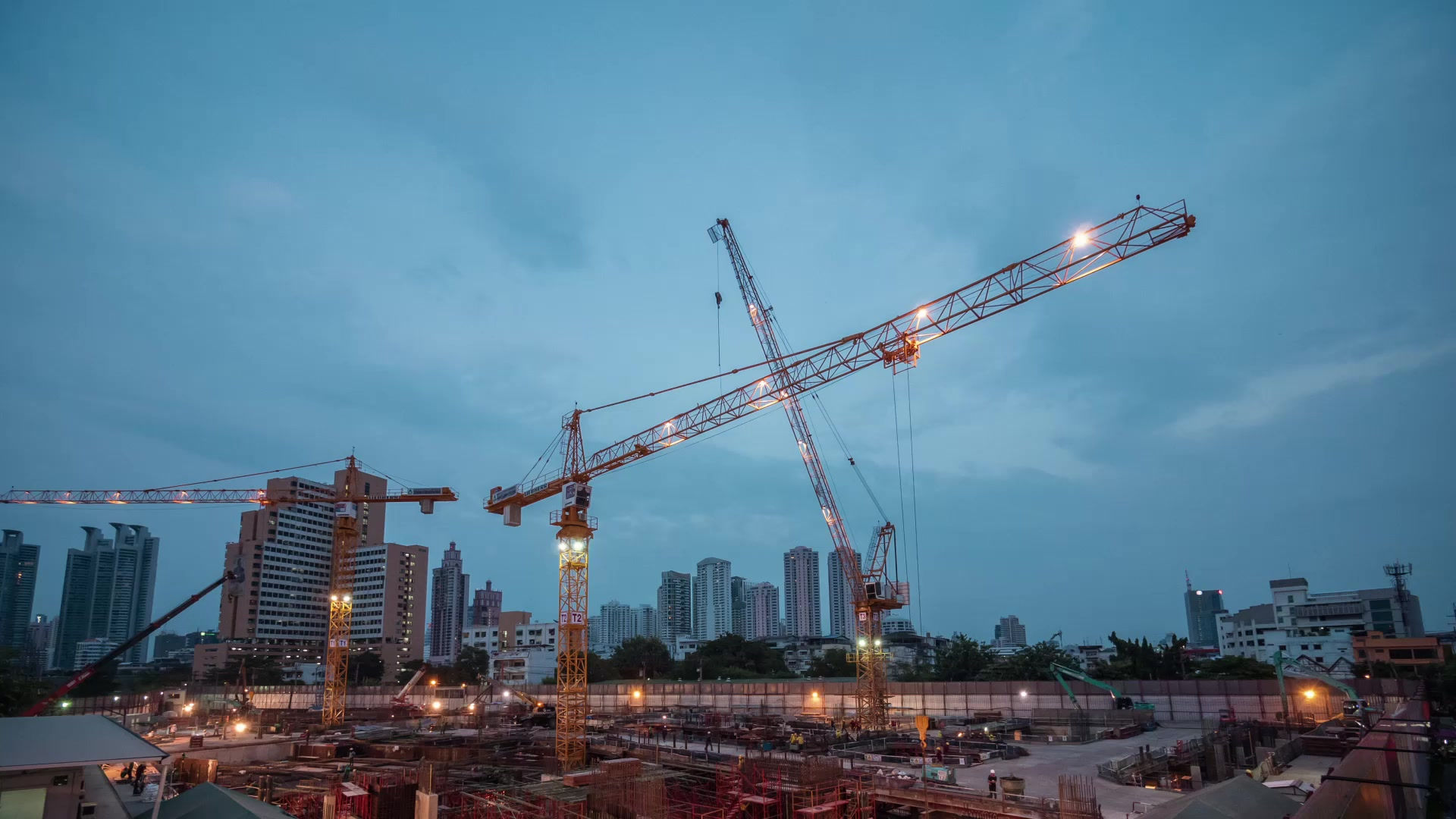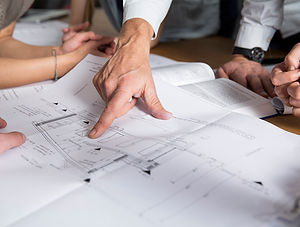
LEADERS IN QUALITY CONSTRUCTION AND INFRASTRUCTURE
SERVICES

Preconstruction Planning
Pre-construction information (Stages 1 to 4)
Project Process MapHealth, safety and environment resourcesHealth, safety and environment policy and standards
The Project Manager is responsible for ensuring the production of the Pre-Construction Information schedule (PCI), until the point when it has been agreed with the Projects Team and deemed suitable for inclusion in the tender documents.
The Principal Designer (PD), when appointed, will assist the project team with developing the PCI, up to its inclusion in the tender documents.
Information that may be included:
-
Asbestos information reports
-
Access and egress for contractors
-
Storage areas identified
-
Parking and delivery arrangements identified
-
Welfare facilities identified
-
Noisy work times
-
Out of hours working arrangements
-
Decanting arrangements
-
Protection of sensitive equipment
-
Dust control methodology
-
Emergency evacuation for building users through the construction site
-
Significant design risk items that remain to be eliminated and/or reduced, through the contractor’s design

Architectural
Modelling
Purpose
Project managers discuss the plant development using an architectural model
Architectural models are used by architects for a range of purposes:
-
Ad hoc models, or sketch models, are sometimes made to study the interaction of volumes, different viewpoints, or concepts during the design process. They may also be useful in explaining a complicated or unusual design to builders, or as a focus for discussion between designers and consultants such as architects, engineers and town planners.
-
Presentation models can be used to exhibit, visualise or sell a final design. A model are also used as show pieces, for instance as a feature in the reception of a building, or as part of a museum exhibition such as scale replicas of historical buildings.
Types of models include:
-
Exterior models are models of buildings which usually include some landscaping or civic spaces around the building.
-
Interior models are models showing interior space planning, finishes, colors, furniture and beautification.
-
Landscaping design models are models of landscape design and development representing features such as walkways, small bridges, pergolas, vegetation patterns and beautification. Landscaping design models usually represent public spaces and may, in some cases, include buildings as well.
-
Urban models are models typically built at a much smaller scale (starting from 1:500 and less, 1:700, 1:1000, 1:1200, 1:2000, 1:20 000), representing several city blocks, even a whole town or village, large resort, campus, industrial facility, military base and so on. Urban models are a vital tool for town/city planning and development. Urban models of large urban areas are displayed at museums such as the Shanghai Urban Planning Exhibition Center, Queens Museum in New York, the Beijing Planning Exhibition Hall, and the Singapore City Gallery.
-
Engineering and construction models show isolated building/structure elements and components and their interaction.
-
A model by architect Lorenzo Winslow which he used to explore the structure of the Grand Staircase at the White House for his redesign of the East Wing.
-
Model of a museum building.
-
Model of a building interior.
-
A scale replica model of the demolished Capitol Theatre in Causeway Bay, Hong Kong
-
A model used for urban planning in the Buenos Aires Province
Virtual modeling
Buildings are increasingly designed in software with CAD (computer-aided design) systems. Early virtual modelling involved the fixing of arbitrary lines and points in virtual space, mainly to produce technical drawings. Modern packages include advanced features such as databases of components, automated engineering calculations, visual fly-throughs, dynamic reflections, and accurate textures and colours.[1][2]
As an extension to CAD (computer-aided design) and BIM (building information modelling), virtual reality architectural sessions are also being adopted at increasingly faster rates. As this technology enables participants to be immersed in a 1:1 scale model, essentially experiencing the building before it is even being built.
Materials
Rough study models can be made quickly using cardboard, wooden blocks, polystyrene, foam, foam boards and other materials. Such models are an efficient design tool for three-dimensional understanding of a structure, space or form, used by architects, interior designers and exhibit designers.
Common materials used for centuries in architectural model building were card stock, balsa wood, basswood and other woods. Modern professional architectural model builders are taking advantage of twenty-first century materials, such as Taskboard (a flexible and lightweight wood/fiber board), plastics, wooden and wooden-plastic composites, foams, foam board and urethane compounds.
A number of companies produce ready-made pieces for structural components (e.g. girders, beams), siding, furniture, figures (people), vehicles, trees, bushes and other features which are found in the models. Features such as vehicles, people figurines, trees, street lights and other are called "scenery elements" and serve not only to beautify the model, but also to help the observer to obtain a correct feel of scale and proportions represented by the model.
Increasingly, rapid prototyping techniques such as 3D printing and CNC routing are used to automatically construct models straight from CAD plans

Construction
Management
Repository
APPRAISAL OF CONSTRUCTION MANAGEMENT PRACTICE IN NIGERIA.
Department : All ,, Faculty : All .
download pdf
Abstract
ABSTRACT
Construction industry has complexity in it nature because it contains large number of partiessuch as clients, consultants and contractors. The factors that influence construction management practice differ from country to country, due to prevailing conditions. The objective of this project is to identify factors that influence construction management practice in Nigeria construction industry and elicit perceptions/ranking of the severity using relative importance index of the various factors. A comprehensive literature review was conducted to generate a set of factors believed to influence construction management practice in Nigeria. A questionnaire survey was conducted and fifty-seven (57) factors were identified, grouped into nine (9) categories, evaluated and ranked from the construction actors perspectives. 108 questionnaires was produced and distributed to the key construction actors as follows: 45 to contractors, 33 to consultants and 30 to clients. Out of these questionnaires distributed, 92 were received (85%) as follows: 40(88.9%) from contractors, 28(84.8%) from consultants and 24(80%) from clients as respondents. They nine categories considered in this research work are as follows: quality management during design, quality management during construction, construction management techniques used in practice, economic policy, management style, socio-political consideration, motivation of staff, obstacles facing construction management practice and benefits of applying construction management tools in practice. The enlarged features included those from both previous Nigerian studies and other related international studies represented in the literature. The degree of agreement between parties regarding the ranking of factors was determined according to Kendall's Coefficient of Concordance and the survey findings indicate from three target groups (contractors, consultants and clients) agree that the most important factors that influence management of construction projects are as follows: conflicting design information, effective co-ordination of resources, critical path method, materials availability, setting timeliness, civil strife of riots, sense of belonging & identification with the project team,lack ofconstruction management knowledge and known work progress.

ABOUT
A Message from Our Founder
"I give praise to all those people with the foresight and courage who have made that decision to build. Look around. Every building you see started out as someone's idea. We turn ideas and dreams into reality. As a licensed professional with an extensive background in the construction industry, I have molded a construction staff qualified in estimating, project management, construction management, scheduling, and a competent field staff of experienced superintendents."
Jerry Nechamkin, PE
Since our founding in 1986, Sphere Construction has renewed its commitment to excellence and creative problem solving on projects like yours. We have accepted the challenge of both large and small companies, owners, developers, and design professionals throughout New Jersey and the surrounding areas.
Our diversified capabilities have allowed us to successfully complete many projects ranging from multi-family residential, apartments, townhomes, condominiums, healthcare, educational facilities, community centers, office buildings, warehouses, pre-engineered steel buildings, retail centers, and financial institutions.
The relationship with our clients has thrived as we enhance our tradition of teamwork, accountability, and innovation. Our proven Design/Build experience as well as a critical eye toward value engineering has given Sphere Construction the edge for completing the project under budget and ahead of schedule.
Our goal is to see that you secure your new building/addition/alteration. One that will yield you the most return on your investment and provide you with the facility your originally envisioned.
We invite your inquiries and welcome the opportunity to discuss how we can best serve you and your construction needs.
2018
Year Established
206
Projects Completed
870
Contractors Appointed
26
Awards Won
PROJECTS

CLIENTS

















CONTACT
Inquiries
For any inquiries, questions or commendations, please call: +234-906-1950-694 or fill out the following form
Head Office
Pompomari Bulumkutu Bypass, Maiduguri - Borno State Nigeria
info@adamuhussaini666.wix.com/mysite
Tel: +234-906-1950-694
Fax: +234-906-1950-694
Employment
To apply for a job with Sphere Constuctions, please send a cover letter together with your C.V. to: mrsmartguy020@gmail.com





